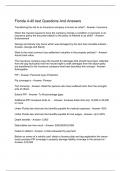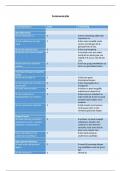Samenvatting
Summary Marketing tutorials ppt notes (course AMM)
- Instelling
- Wageningen University (WUR)
- Boek
- Marketing Models
This document contains the marketing tutorial notes including all the information out of the powerpoint presentations. This was used at the marketing part of the course Advanced Management and Marketing. It contains part of the book: Marketing Models: Multivariate Statistics and Marketing Analyti...
[Meer zien]














